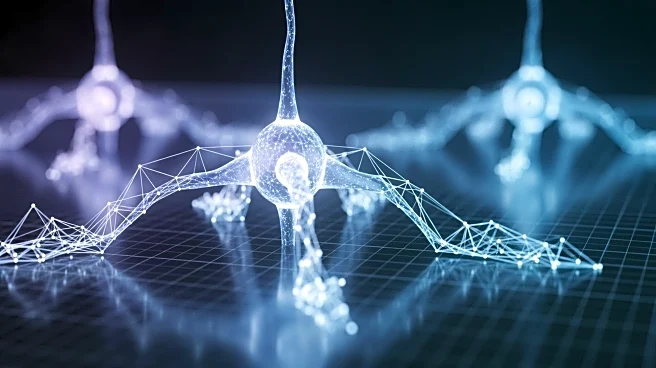What's Happening?
Recent advancements in AI-driven photonic noses are revolutionizing environmental monitoring and healthcare diagnostics. These systems utilize sophisticated machine learning algorithms to process sensor data, improving the accuracy and specificity of
detection results. Photonic noses, integrated with metal-organic frameworks (MOFs), are capable of identifying volatile organic compounds (VOCs) through visual recognition and color changes. AI algorithms such as principal component analysis (PCA) and hierarchical cluster analysis (HCA) are employed to classify substances based on their chemical composition. Additionally, photonic noses are being used in healthcare to analyze exhaled breath for disease biomarkers, offering non-invasive diagnostic capabilities for conditions like lung cancer and diabetes.
Why It's Important?
The integration of AI with photonic noses represents a significant leap forward in both environmental and healthcare sectors. For environmental monitoring, these systems provide high-resolution data that can be used for real-time decision-making, potentially improving responses to hazardous gas leaks and pollution. In healthcare, the ability to diagnose diseases through breath analysis could lead to earlier detection and treatment, improving patient outcomes. The use of AI enhances the precision of these systems, making them more reliable and efficient. Industries stand to benefit from reduced costs and improved safety measures, while society gains from better health diagnostics and environmental protection.
What's Next?
The continued development of photonic noses is likely to expand their applications across various fields. In environmental monitoring, these systems could be deployed more widely in urban areas to track air quality and detect pollutants. In healthcare, further research may lead to the identification of additional biomarkers, broadening the scope of diseases that can be diagnosed non-invasively. The integration of cloud intelligence and edge computing with photonic noses could enhance their functionality, allowing for more complex data analysis and faster response times. Stakeholders, including government agencies and healthcare providers, may invest in these technologies to leverage their benefits.
Beyond the Headlines
The ethical implications of using AI-driven photonic noses in healthcare and environmental monitoring are significant. Privacy concerns may arise from the collection and analysis of personal health data, necessitating robust data protection measures. Additionally, the deployment of these systems in public spaces could lead to debates over surveillance and individual rights. Long-term, the widespread use of photonic noses could shift cultural attitudes towards health monitoring and environmental responsibility, fostering a more proactive approach to these issues.













